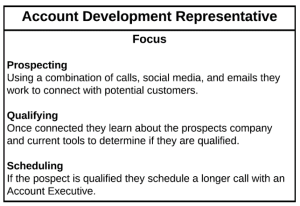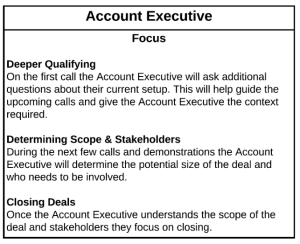In the recruiting world, we chase this idea of trying to define the roles of sourcer and recruiter. It’s very important to role define, don’t get me wrong. I’m not discounting that point. But while we spend our time debating over these definitions, the sales industry has it figured out. We call it sourcing. Sales people call it lead generation or prospecting.
To prove this point let’s have a conversation with leaders of some successful sales teams in the booming economy of Utah, also called the Silicon Slopes due to the mass attraction of Silicon Valley IT companies and VC money to the area over the last decade or so.
We’ll start off with an old friend of mine, Bubba Page – the owner of Launch Leads an industry leader in lead generation catered to business-to-business sales leads. Launch Leads is an interesting company to draw parallels from because they are a third party service provider, of which a lot of players exist in sourcing and recruiting.
From our discussion and their materials I derived their process.
- They use internal data mining technology to build lists of names based on targeted criteria given to them.
- They qualify those leads based on their client’s criteria.
- They schedule them for an appointment with their client’s sales team.
That process correlates highly with the Wikipedia definition of sourcer:
“Sourcing is a talent acquisition discipline, which is focused on the identification, assessment, and engagement of skilled worker candidates…”
In fact, these roles are identical. Build lists and make sure they match the qualifications then generate interest in the opportunity. But in sales, this role is almost ubiquitously defined this way. Sourcing/prospecting/lead generation is not the sales person’s favorite activity.
“I can find an Eskimo in Arizona!” Said no salesman ever. That’s because he doesn’t want to find the Eskimo. He wants to close him on bucket loads of snow. Yet recruiters for some reason want to half-heartedly source, which is code for posting jobs on the internet. Take a lesson from Launch.
Talking with Page about his company really allows us to see how a large part of their success comes down to how clearly their sourcer equivalent role is defined.
But it wasn’t until I spoke with Matt Gillrie, senior manager of sales enablement at Lucid Software, Inc. that I realized why it would be so powerful for our industry to delineate sourcing from recruiting in the same manner.
Lucid Software, Inc. creates some of the most interactive and expressive web-based productivity tools. Such as Lucidchart, which is a popular diagramming web-based application that creates powerful visual communications and diagrams, and Lucidpress built to design print and digital content. They’re part of why the booming Saas software industry in the Silicon Slopes believes so heavily in the model of having account development representatives (ADRs) who set appointments for their account executives (AEs).
Look at how clearly defined each role is in the process.


If we replaced account development representative with sourcer and account executive with recruiter, I think we would have a consensus that those are their core functions. These two roles function as complementary internal team members at most Saas software companies.
Chris Shaw, who has led recruiting and sourcing teams at Meteor, Illumio and Twitter recently described the roles of sourcer and recruiter very similarly.
“In my opinion, a ‘Sourcer’ focuses specifically on researching and developing passive candidates. By “developing”, I mean that they turn passive candidates into active candidates via various outreach techniques… [One type of recruiter] work[s] in tandem with Sourcers. [They] focus on managing and closing active candidates.”
Launch and Lucid are great examples of similarities between sales and sourcing/recruiting both from a third party point of view and an internal one. Why is this relevant?
Sales teams in the Saas software space use the ADR to AE model for a purpose. The sales industry has proven that when you clearly delineate between the two roles you can double production. Gillrie explains a model to forecast how ADRs and in our case sourcers can do just that for AEs and recruiters.
First, we must understand how the AEs or full-cycle recruiters spend their time when they do not have an ADR/sourcer. The typical AE spends 60 percent of their time prospecting (sourcing), 30 percent of their time determining the scope and 10 percent closing (recruiting).
With that predetermined breakout of time spend, let’s look at where production is at for the lone AE and the full-cycle recruiter. Assume an AE closes 40 deals a year at $15,000 each. This is a pretty reasonable assumption in the Saas software industry. Calculate that and he/she generates $600,000. Minus a typical salary of an AE at $120,000 and you get a total net production of $480,000.

Suppose we now create the role of ADR/sourcer and pay that person $55,000 a year. The ADR/sourcer spends 100 percent of his/her time prospecting. This frees up the 60 percent of the time the AE/recruiter was spending. So we added an extra 40 percent of production. That’s a factor increase of 1.67 (100 percent current production/60 percent previous production). Multiply that times the 40 deals under the previous production level and we’ve increased current production to 67 deals.
Again, average deal size is $15,000. Multiply that times 67 deals and we get $1,005,000. Next, we subtract out the cost. That includes the AE’s salary of $120,000 and also the new ADR’s salary at $55,000. The company now brings in $830,000. So we have almost doubled production by separating the two roles.

It’s simple. Our industry needs to follow the sales model and clearly delineate the roles of sourcer and recruiter. If we do, we’ll have double the production, double the pleasure and double the fun.
